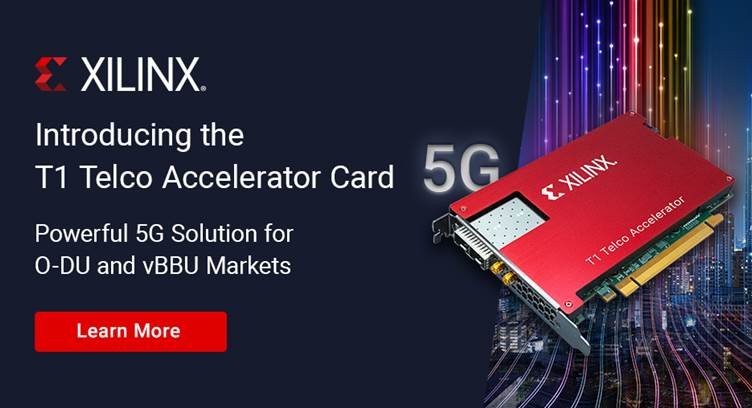Xilinx recently announced the T1 Telco Accelerator Card for O-RAN distributed units (O-DUs) and virtual baseband units (vBBUs) in 5G networks.
Built using the same field-proven Xilinx silicon and IP already being deployed in 5G networks, the T1 card is the only multi-function PCIe form factor card which performs both O-RAN fronthaul protocols and layer 1 offload.
With its advanced offload capabilities, the T1 card provides a dramatic reduction in the number of CPU cores required in a system. The T1 card also enables the O-DU to deliver greater 5G performance and services while reducing overall system power consumption and cost compared to competitive offerings.
The demand for O-DU and vBBU solutions is rapidly increasing because they provide an open and standard platform for a wide range of 5G virtualized services. The T1 card is a small form factor, single-slot card that can be plugged into standard x86 or non-x86 servers to achieve the real-time protocol processing performance required for 5G virtualized O-DU platforms. In addition, it offloads line-rate and compute-intensive functions including: channel encoding/decoding using hardened LDPC and Turbo codecs, rate matching/de-matching, HARQ buffer management, and more, freeing the processor cores for running other services - the true promise of virtualization.
The T1 card simplifies 5G deployments by offering a turnkey solution through ecosystem partners that includes both O-RAN fronthaul and 5G NR layer 1 reference designs, as well as pre-validated software to enable operators, system integrators, and OEMs to get to market quickly. The offloading of critical channel coding functions from the CPU to the T1 card delivers up to 45x encoding and 23x decoding throughput improvement relative to the same server without acceleration. The T1 card enables the use of fewer CPU cores, driving down system cost and overall power consumption. Additionally, for O-RAN fronthaul termination, it can process multiple sectors of 5G NR 4TRX at 100 MHz OBW with its 50 Gbps of optical ports. The Fronthaul and L1 bandwidths are matched for optimal scalability; the more towers you want, the more cards you add to the server.
Dan Mansur, vice president of marketing, Wired and Wireless Group, Xilinx
The trend toward network virtualization and O-RAN has given us an opportunity with the Xilinx T1 Telco Accelerator Card to drive the next steps of disaggregation of standard networks, enabling our expansion into every corner of the 5G market.
Daryl Schoolar, practice leader for Fixed and Mobile Infrastructure, OMDIA
With growing operator interest in O-RAN and virtualization, the Xilinx T1 Telco Accelerator Card is a compelling solution that is well-timed to serve this need while also enabling important areas such as software and services at the edge.




















